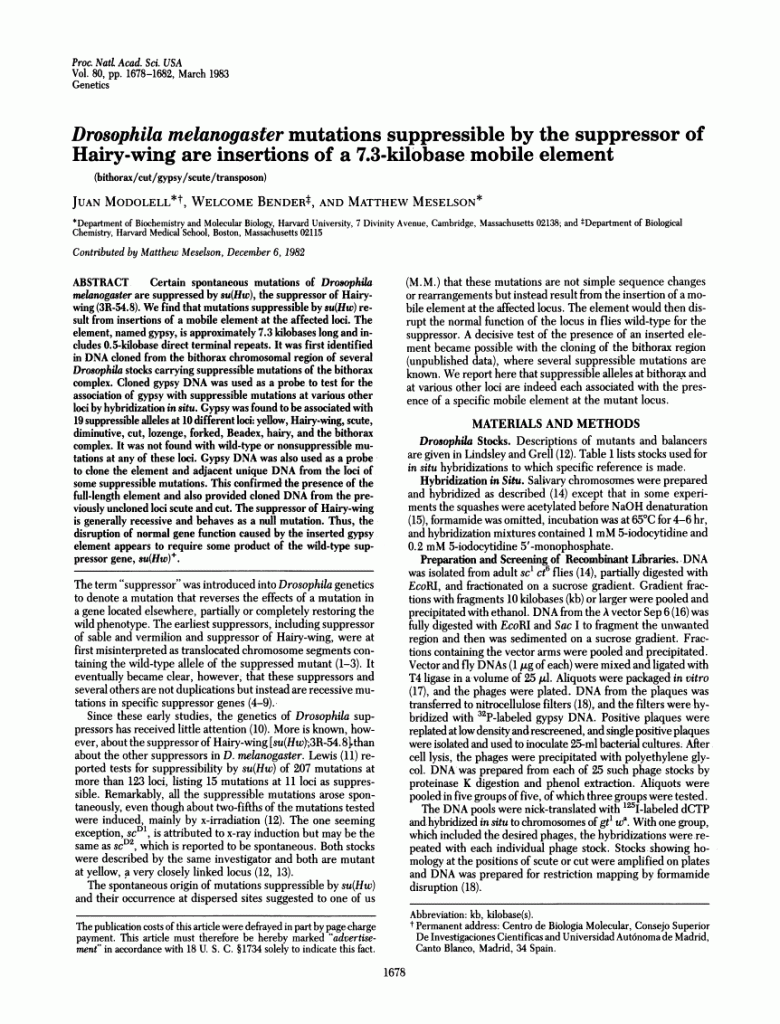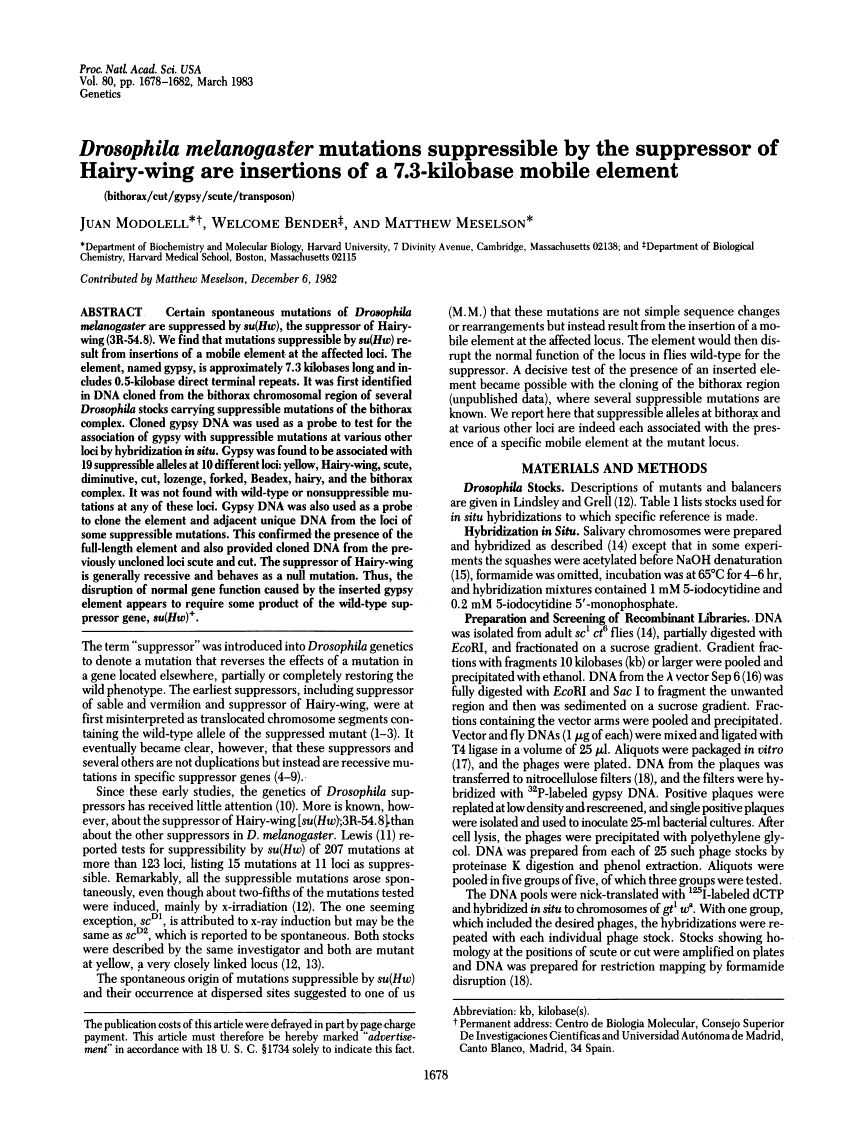Certain spontaneous mutations of Drosophila melanogaster are suppressed by su(Hw), the suppressor of Hairy-wing (3R-54.8). We discover that mutations suppressible by su(Hw) end result from insertions of a mobile ingredient at the affected loci.
The ingredient, named gypsy, is roughly 7.three kilobases lengthy and contains 0.5-kilobase direct terminal repeats. It was first recognized in DNA cloned from the bithorax chromosomal area of a number of Drosophila shares carrying suppressible mutations of the bithorax advanced. Cloned gypsy DNA was used as a probe to check for the affiliation of gypsy with suppressible mutations at varied different loci by hybridization in situ.
Gypsy was discovered to be related to 19 suppressible alleles at 10 completely different loci: yellow, Hairy-wing, scute, diminutive, reduce, lozenge, forked, Beadex, bushy, and the bithorax advanced. It was discovered with wild-type or nonsuppressible mutations at any of these loci. Gypsy DNA was additionally used as a probe to clone the ingredient and adjoining distinctive DNA from the loci of some suppressible mutations.
This confirmed the presence of the full-length ingredient and in addition supplied cloned DNA from the beforehand uncloned loci scute and reduce. The suppressor of Hairy-wing is usually recessive and behaves as a null mutation. Thus, the disruption of regular gene operate induced by the inserted gypsy ingredient seems to require some product of the wild-type suppressor gene, su(Hw)+.

Analysis of chromosome breakpoints in neuroblastoma at sub-kilobase decision utilizing fine-tiling oligonucleotide array CGH.
Understanding the genes and genetic pathways focused by recurrent chromosomal imbalances in malignancy, together with the molecular mechanisms that generate the imbalances, are necessary issues in most cancers biology. In this report, we exhibit that oligonucleotide array CGH (oaCGH) evaluation can routinely map chromosomal imbalance breakpoints at exon-level decision, together with imbalances that are single copy quantity genomic alterations.
Different tiling-path array designs had been used on this research: a whole-genome array with a 6-kb median probe spacing and fine-tiling arrays for chosen genomic areas with both 50- or 140-bp median probe spacing. In each array codecs, oligonucleotide probes had been of isothermal design and had been tiled via genic and inter-genic areas. Whole-genome oaCGH evaluation of two neuroblastoma cell traces and three main tumors led to the identification of 58 chromosomal breakpoints that generated 45 large-scale partial chromosomal imbalances >> 2 Mb).
An unexpectedly excessive proportion (34%) of these breakpoint intervals mapped to areas containing segmental duplications. In addition, 88 smaller-sized areas (< 2 Mb) of imbalance had been detected, the majority of which mapped to segmentally duplicated areas and should mirror constitutional copy quantity polymorphisms.
The chromosomal breakpoints for 12 recurrent abnormalities exhibited in neuroblastoma tumors and cell traces, together with MYCN amplicon boundaries, loss of 3p, loss of 11q, and achieve of 17q, might be mapped to intervals starting from 50 bp to 10 kb in measurement utilizing high-density fine-tiling oligonucleotide microarrays. Fine-tiling oaCGH evaluation offers an unprecedented degree of decision, permitting detailed mapping of recurrent unbalanced chromosomal abnormalities. Supplementary materials for this text will be discovered on the Genes, Chromosomes, and Cancer web site at http://www.interscience.wiley.com/jpages/1045-2257/suppmat/index.html.

